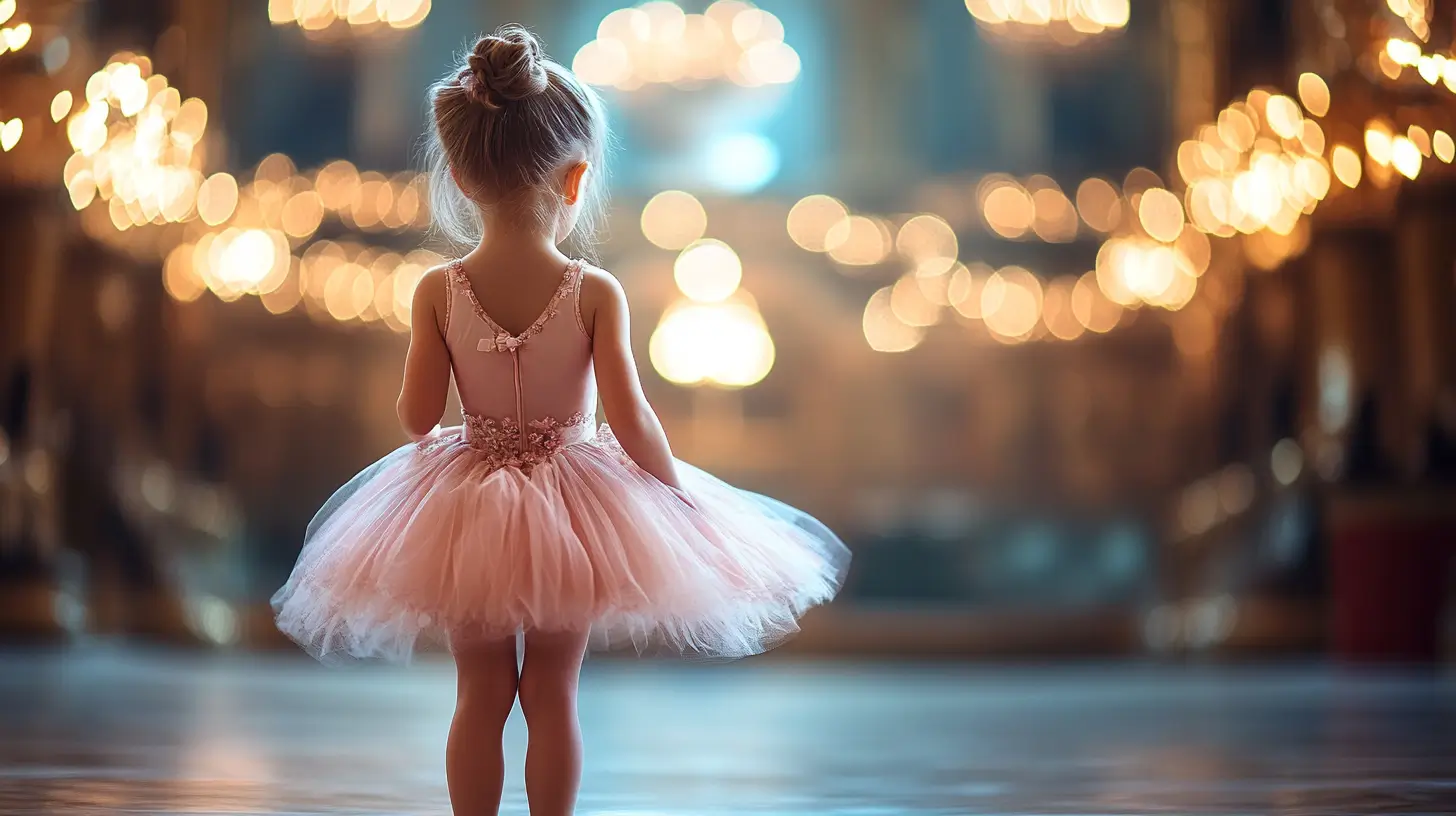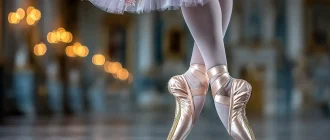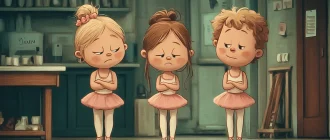Are you curious if ballet tap is right for 2-year-olds and your toddler? Ballet can be a fantastic way to support your child’s growth. This article will discuss how ballet helps toddlers develop physically, socially, and emotionally. We’ll also guide you on what to expect from ballet tap classes and how to choose the best one for your child.
Graceful Insights
- Ballet for toddlers boosts physical, social, and emotional development, helping them gain coordination and build friendships through movement.
- Parent participation in toddler ballet classes enhances the learning experience and provides valuable support for young dancers.
- Choosing a qualified teacher and a nurturing environment is crucial when selecting the right ballet class for your child’s growth and enjoyment.
Art de Podcast
| Dance Studio | Class Name | Age Range | Class Description | Location |
|---|---|---|---|---|
| Kenwood School of Ballet | ITwirl Dance Program | 2–3 years | An engaging pre-ballet program developed by the Artistic Director, focusing on intuitive and tactile learning experiences. | Kenwood School of Ballet |
| Tippi Toes Dance | Baby Ballet Dance Classes | 2–4 years | Introduces basic dance steps in a fun and positive environment, serving as a transition from Toddler & Me classes. | Tippi Toes Dance |
| Tiny Toes Ballet | Twinkle Toes | 18 months–2.5 years | Imaginative-themed classes where children learn ballet basics through role-play, songs, and props. | Tiny Toes Ballet |
| Tiffany’s Dance Academy | Twinkle Babies Dance Classes | 2–3 years | A 30-minute introductory class combining ballet, tap, and creative movement, using props to inspire imagination. | Tiffany’s Dance Academy |
| Christine Rich Studio Dance Academy | Dance Movement for 2–3-Year-Olds | 2–3 years | Focuses on rhythm, coordination, and creative movement, introducing toddlers to basic ballet and dance etiquette. | Christine Rich Studio |
The Benefits of Ballet for 2-Year-Olds
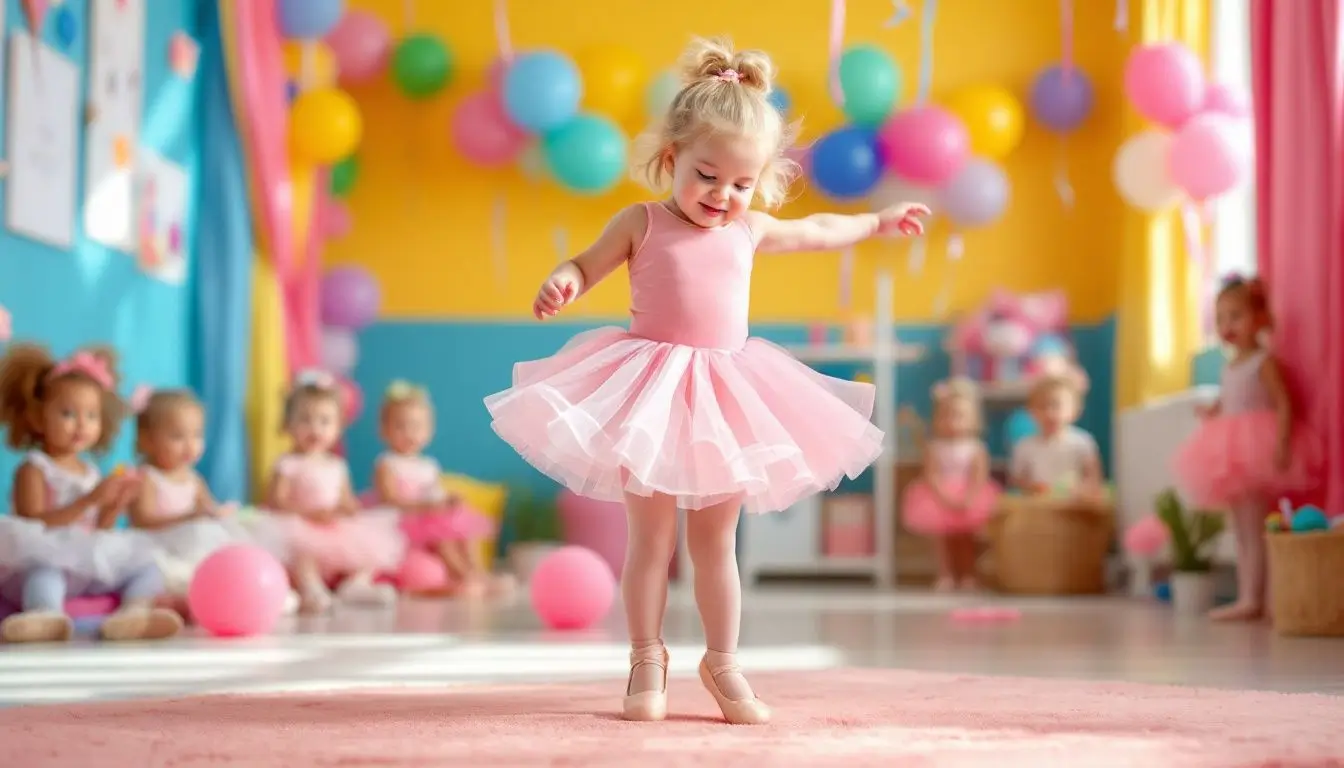
Ballet offers toddlers numerous benefits, including physical, social, and emotional growth. It is more than just dancing; it develops basic skills and fosters a love for movement and music. Through ballet, toddlers can improve their coordination skills, body awareness, and overall health while having fun and making new friends. Other dance styles, like hip-hop, can also contribute to physical development and coordination skills.
Let’s dive in with little ones to explore the specific benefits of ballet tap for kids and toddlers, including developing basic ballet skills, promoting social and emotional growth, and supporting physical development. Each aspect contributes to a well-rounded and enriching experience with ballet tap for your little ones and children.
Developing Basic Ballet Skills
For toddlers, ballet and jazz dance classes focus on teaching fundamental movements and basic dance steps. These introductory sessions often incorporate fun and engaging activities, such as movement games, to develop rhythm and improve coordination. Introducing ballet terminology, basic dance steps, and positions helps children grasp the structure of dance, including creative movement, rhythm, and discipline. Additionally, some hip-hop dance classes can be introduced as another dynamic and energetic dance style that helps develop coordination and flexibility while engaging students in an enjoyable and culturally relevant manner.
These jazz dance classes help toddlers learn basic jazz dance steps while developing body awareness and coordination, which are essential for overall growth. This method allows them to explore movement, rhythm, and music in a structured and playful environment before they are two years old.
Social and Emotional Growth
Participating in the jazz dance classes provides toddler dancers with valuable opportunities for social interaction. They make friends, share, and work together, which helps them enhance their social skills. Ballet jazz dance classes can also foster emotional expression, allowing children to express their feelings through creative movement, which is essential for emotional development.
A positive studio atmosphere plays a crucial role in this growth. It helps children feel secure and confident, vital for their mental well-being. This atmosphere allows toddler dancers to express themselves freely and build confidence as they age.
Physical Development
Ballet practice significantly enhances flexibility, which is more easily developed during the early years. Toddler dance classes typically include structured warm-ups, movement games, and cool-down periods designed to promote strength, improve coordination, and enhance skills and balance.
These activities improve body awareness and spatial understanding, which are crucial for physical development. Regular practice, even in short sessions each week, can help students build muscle memory and improve their ballet skills without feeling overwhelmed.
Toddler Dance Classes: What to Expect
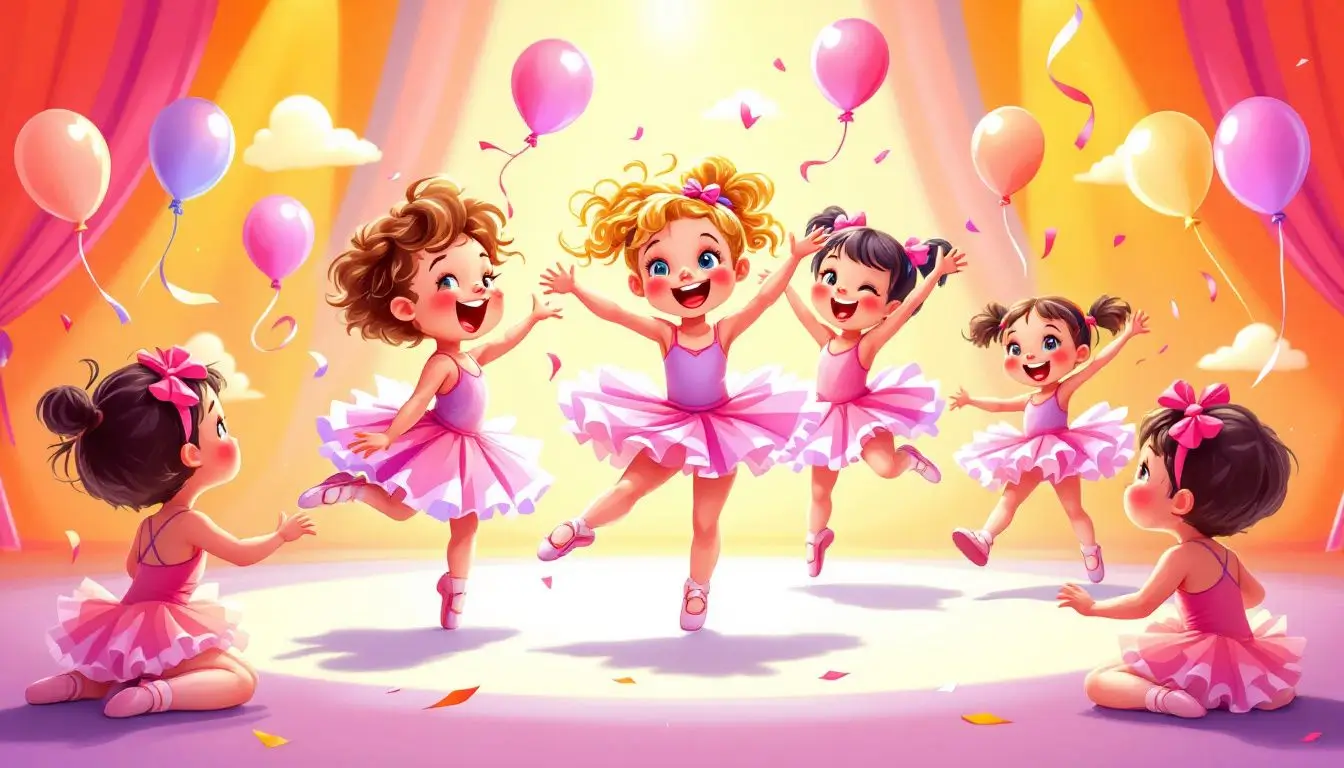
Enrolling your toddler in dance classes is an exciting step. These classes are tailored for young children, typically ages 2 to 4, and aim to create an engaging and fun environment. Playful activities and simple dance steps introduce foundational skills like placement, posture, and discipline. Some dance classes might include hip-hop to keep the children engaged and develop broader skills.
Knowing what to expect better prepares you and your family member or child. The following subsections discuss age-appropriate activities, parent participation, and the typical class structure and schedule.
Age-Appropriate Activities
Toddler dance classes often include fun, quick-paced activities to keep students’ attention. Creative movement games and hip-hop activities are staples of hop-dance classes, promoting coordination and gross motor skills while keeping the little ones entertained.
Carefully chosen activities encourage self-expression and develop rhythm and coordination skills in students. They are also suited and appropriate for their age. These activities help develop physical skills, making the children’s creative movement classes enjoyable and exciting.
Parent Participation
Parent participation in dance classes is a key component of toddler dance classes. Caregivers play a crucial role in helping children during class, assisting them in engaging with the activities. Active participation in dance class allows parents to guide their children through movements, music, and routines, enhancing learning.
Attending ballet activities, such as performances, boosts children’s motivation and pride. Such supportive actions help children learn new skills, develop rhythm, and have a joyful dance experience.
Class Structure and Schedule
A typical toddler music and dance class is structured to include music and various activities that keep the children engaged.
Classes usually start with:
- a warm-up
- followed by movement games
- simple dance routines
- and end with a cool-down period.
Ensure your child’s dance class attire is ready by the week before the first day of class. Familiarity with the schedule and structure of dance class prepares both the child and parent for a successful and enjoyable experience.
Choosing the Right Ballet Class for Your Child
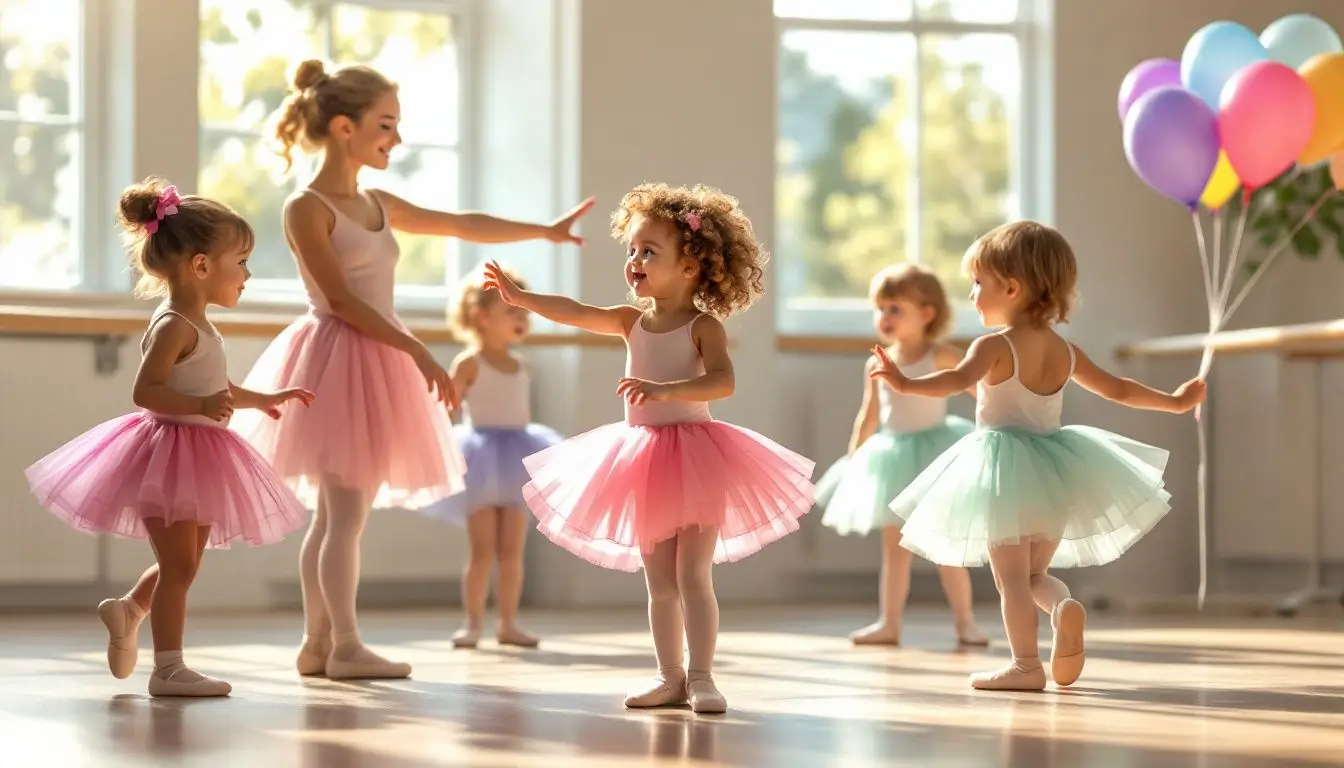
Choosing the right ballet class is crucial for your toddler’s development and enjoyment. Key factors include the dance teacher’s expertise, age-appropriate classes, and a supportive, fun, and engaging environment.
The next subsections will offer tips on choosing qualified teachers, ensuring a safe environment, and the importance of trial classes and observations.
Qualified Teachers
Qualified teachers with specialized early childhood dance education training are essential for toddler ballet dance classes here. These instructors can tailor dance lessons to suit the developmental needs of young dancers, making the dance classes both educational and enjoyable.
These teachers support the unique learning styles of young children, ensuring a valuable ballet experience.
Safe and Welcoming Environment
A nurturing studio atmosphere is essential for young dancers. It fosters safety and comfort, allowing children to feel secure while learning. A clean and safe studio space creates a sense of safety and belonging.
An inviting, well-maintained studio helps young dancers feel at ease, making their ballet journey enjoyable and productive.
Trial Classes and Observations
Trial classes help parents evaluate whether an engaging music class aligns with their child’s interests, new skills, and needs. They also allow parents to assess the teacher’s approach and class dynamics.
Parents can observe how their family members interact with the instructor and peers, ensuring a good fit for their family members’ personalities and developmental stages.
Dress Code and Equipment
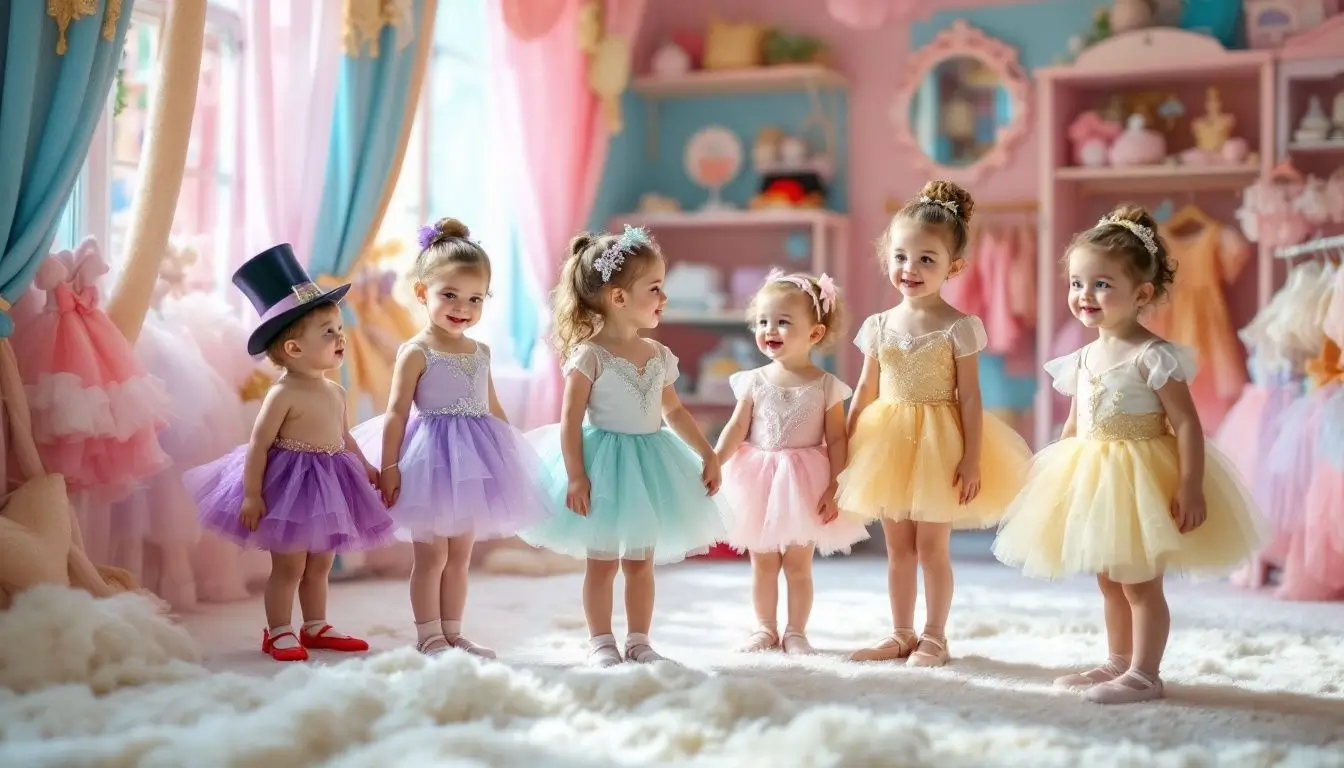
Having the right attire and equipment is essential for toddler ballet classes. Proper ballet attire ensures comfort and freedom of movement for young dancers.
In the following subsections, we’ll outline typical ballet attire for toddlers, additional accessories to enhance the experience, and tips on purchasing affordable yet high-quality ballet gear.
Ballet Attire for Toddlers
A typical ballet outfit for toddlers includes a leotard, tights, and ballet slippers. These items are essential for comfort and flexibility, allowing children to explore movement and move freely during dance classes.
Ballet dresses and flexible dance skirts are recommended, offering style and practicality.
Additional Accessories
Accessories like tutus and hair accessories make a toddler’s ballet outfit fun. Tutu is a popular addition that many young dancers enjoy wearing during dance classes.
Headbands or ballet buns keep hair neat and out of the face. These accessories can complement the style of ballet attire and enhance the overall experience.
Purchasing Tips
Parents can find affordable ballet attire at retailers like Target and Walmart. Quality ballet gear is also available online at dedicated dancewear shops, often with discounts.
Local dance shops frequently carry a range of ballet gear suitable for toddlers, providing options that fit various budgets and needs. When purchasing ballet gear for your child, it’s key to prioritize a good fit and comfort while remaining budget-friendly.
How to Support Your Child’s Ballet Journey
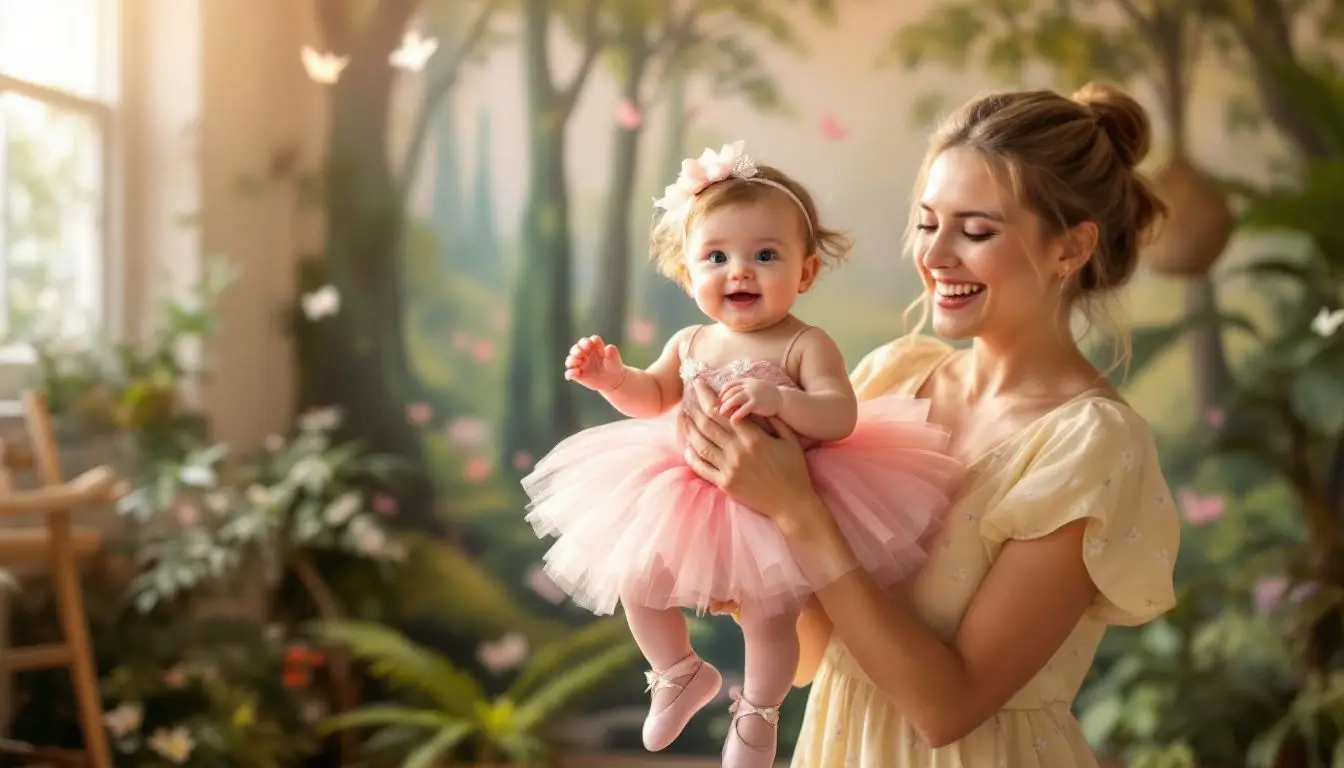
Supporting your child’s ballet journey involves more than just enrolling them in classes. A positive and encouraging home environment can significantly enhance their experience and motivation.
The following subsections discuss creating a positive home environment, encouraging practice and participation, and celebrating progress.
Creating a Positive Home Environment
Active caregiver engagement in ballet activities provides support and encouragement, helping children feel more comfortable. A dedicated practice space at home can enhance engagement and make ballet fun for the whole family.
Participating in activities and assisting outside the classroom can ease anxiety and strengthen your connection with your child.
Encouraging Practice and Participation
Introducing your child to ballet and dance-related music, as well as jazz and hip-hop music and movements, at home can foster their enthusiasm for dance and make practice more enjoyable. Emphasizing fun over competition and creating a low-pressure class atmosphere encourages active participation.
Celebrating milestones, such as attending recitals or showcasing new skills, can enhance motivation and joy in ballet.
Celebrating Progress
Recognizing small achievements in ballet boosts a child’s confidence and encourages others to continue making an effort. Celebrating small and large milestones enhances enjoyment and provides a rewarding experience for dancers and families.
Regularly acknowledging progress keeps children motivated and makes their ballet journey memorable.
Resume
Ballet offers numerous benefits for toddlers, including physical, social, and emotional development. Understanding what to expect in classes, choosing the right class, and supporting your child’s journey are crucial steps for a successful and enjoyable experience.
We hope this guide inspires you to enroll your toddler in ballet classes and witness their growth and joy as they embark on their dance journey.
Frequently Asked Questions
Is 2 years old too early to start ballet?
Not at all—creative movement or “baby ballet” sessions are specifically designed for children from about 20 months old, focusing on exploration rather than strict technique.
How long should a ballet class for a 2-year-old last?
Most studios keep lessons to 30 minutes so toddlers stay engaged without getting tired, which aligns with industry guidance for children under 3.
What should my toddler wear on their first day?
A simple cotton leotard, footed tights, and soft ballet slippers give 2-year-olds freedom to move and meet typical studio dress codes.
Do they need ballet shoes, or can they dance barefoot?
Bare feet are fine for trial classes, but well-fitted leather or canvas slippers protect developing arches once weekly training begins.
How do I find a quality “ballet class for 2-year-olds near me”?
Search for programs labeled “pre-ballet,” check that teachers hold early-childhood dance credentials, and request a parent-and-me trial before enrolling.
What developmental benefits can ballet offer my 2-year-old?
Dance play boosts coordination, language, and social skills while meeting the American Academy of Pediatrics’ daily movement recommendations for toddlers.
How many classes per week are ideal at this age?
One 30-minute class, plus lots of free play at home, is enough; over-scheduling very young dancers can dull the fun and stress growing joints.
My child is shy—any tips to ease separation anxiety?
Bring a familiar comfort object, establish a quick “hug-and-go” ritual, and coordinate with the teacher on gentle integration strategies.
Are online ballet classes effective for 2-year-olds?
Virtual sessions can be a playful supplement, but most parents report that toddlers stay engaged only if a caregiver participates on camera with them.
What basic safety measures should a toddler studio follow?
Studios should allow ample warm-up time, keep props clutter-free, and use shock-absorbent floors to minimize overuse and fall injuries.
Can boys join ballet at 2 years old?
Absolutely—mixed-gender toddler classes normalize dance for everyone and build early motor confidence regardless of gender.
How can I support practice at home without pressure?
Play ballet music, mimic class games, and celebrate small milestones instead of drilling positions, which experts say helps keep motivation high.
When do children move from creative-movement to formal technique?
Most structured syllabi (e.g., Royal Academy of Dance) start formal Pre-Primary work around age 5, after ample creative exploration.
Does early ballet cause foot or hip problems?
Not when classes stay age-appropriate—avoiding pointe work and emphasizing natural turnout protects growing bones, say pediatric sports-medicine teams.
Why is toddler ballet attire different from older kids’ dancewear?
Leotards with snap crotches, no zippers, and soft elastics make bathroom breaks easier and prevent skin irritation common in sensitive toddler skin.

